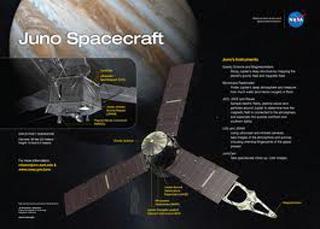
NASA's Juno spacecraft. Photo: NASA.
WASHINGTON (PTI): In a first-of-its-kind message for an interplanetary spacecraft, thousands of amateur radio operators around the world were able to say 'Hi' to NASA's Juno spacecraft as it swung past Earth on its way to Jupiter.
In the "Say Hi to Juno" project, all licensed amateur radio operators were invited to participate by visiting a website and following posted instructions.
"The idea was to coordinate the efforts of amateur radio operators all over the world, and send a message in Morse code that could be received by the University of Iowa-designed-and-built instrument on the Juno spacecraft," Donald Kirchner, University of Iowa research engineer on Juno and one of the coordinators of the project said.
"We know that over a thousand participated, and probably many more than that," said Kirchner.
Juno did not return the greeting or even decode the message itself.
After the amateur radio operators' messages were sent, the Juno team evaluated the Waves instrument data containing the messages after the October 9 flyby.
The message was visible early in the event when the spacecraft was still over 37,000 kilometres from the Earth.
Kirchner noted that although previous space missions - Galileo on its way to Jupiter and Cassini while headed for Saturn - were able to detect shortwave radio transmissions during their Earth encounters, it was not possible to decode intelligent information using the data from those spacecraft.
"We believe this was the first intelligent information to be transmitted to a passing interplanetary space instrument, as simple as the message may seem," Bill Kurth, UI research scientist and lead investigator for the Waves instrument said.
The "say Hi" project was made possible by the fact that Juno passed within 350 miles of the Earth's surface on October 9 in a manoeuvre to gain momentum for its July 2016 encounter with Jupiter.
Plans call for Juno to orbit Jupiter 33 times. Among a variety of investigations, Juno will explore Jupiter's northern and southern lights by flying directly through the electrical current systems that generate them.
 Previous Article
Previous Article Next Article
Next Article











The Indian Air Force, in its flight trials evaluation report submitted before the Defence Ministry l..
view articleAn insight into the Medium Multi-Role Combat Aircraft competition...
view articleSky enthusiasts can now spot the International Space Station (ISS) commanded by Indian-American astr..
view article